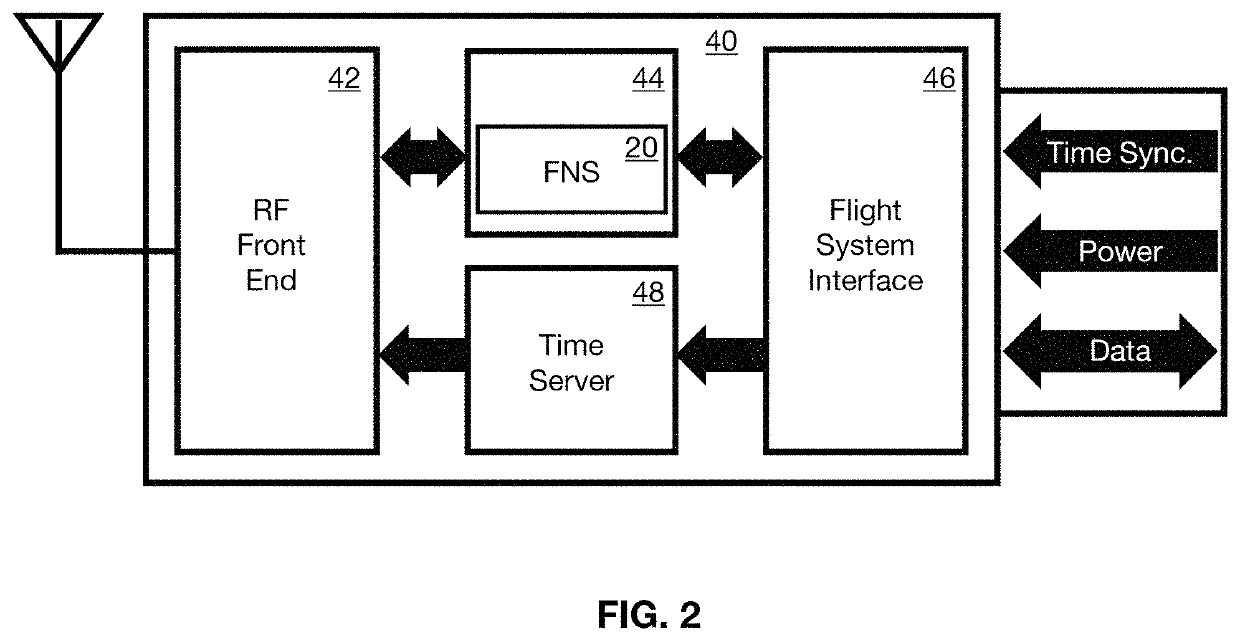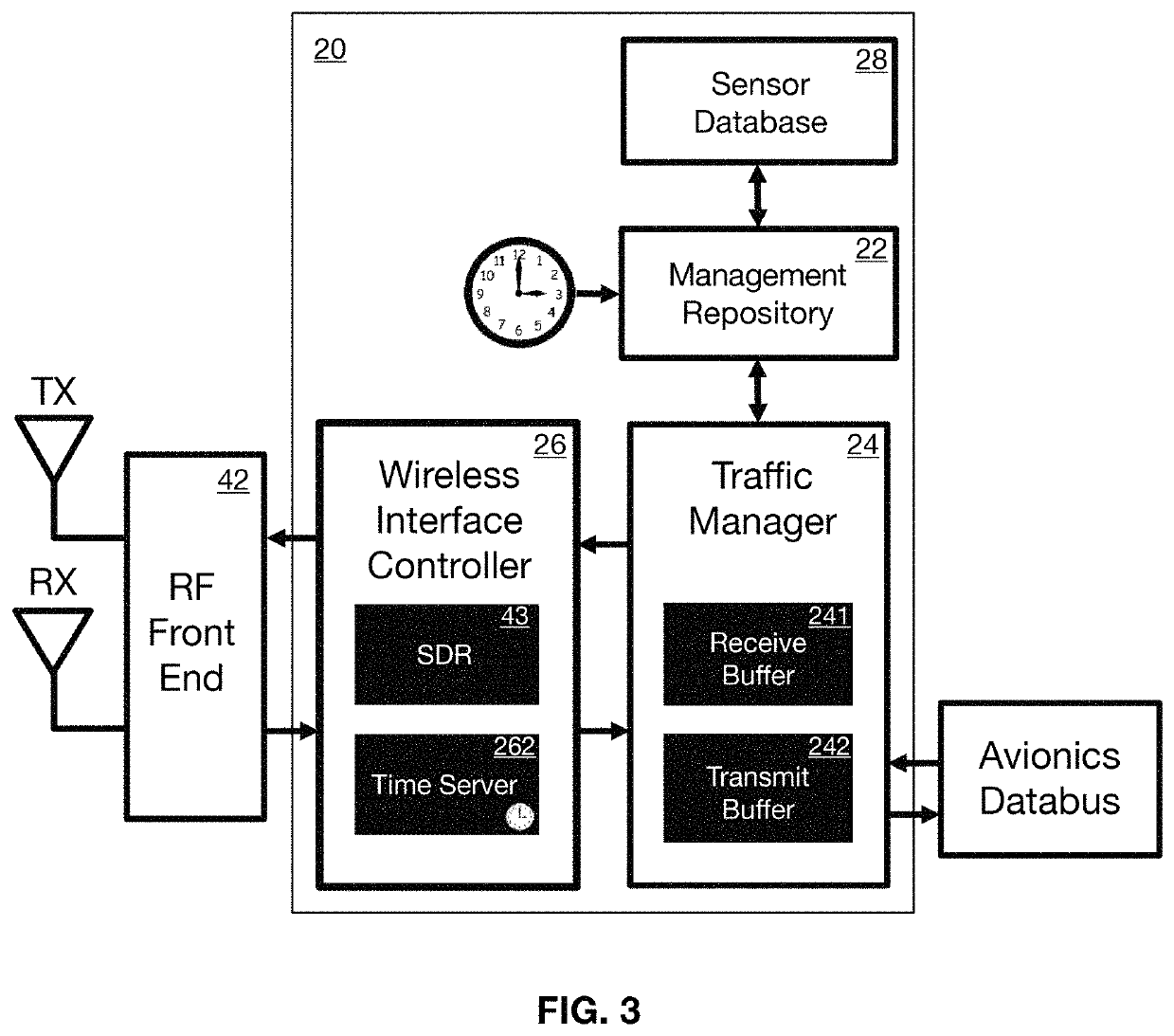Wireless flight sensor system for air and space vehicles
a sensor system and air and space vehicle technology, applied in the field of aircraft control systems, can solve the problems of gaining significant traction in the aerospace industry, complex competing requirements, and inability to incorporate new emerging wireless technology without significant custom development and integration, and achieve the effect of easy reprogramming
- Summary
- Abstract
- Description
- Claims
- Application Information
AI Technical Summary
Benefits of technology
Problems solved by technology
Method used
Image
Examples
Embodiment Construction
[0037]The present invention is a wireless flight sensor system that incorporates a network of wireless sensors all in communication with a sensor gateway, the gateway in turn being in communication with a flight network. The wireless sensor gateway provides an agnostic wireless interface, and runs modular software to interface the wireless devices to the wireless sensor gateway, and the sensor gateway to the flight network. This software includes a software defined radio (SDR) to communicate, which is easily reconfigurable to accommodate new wireless sensor profiles. The wireless sensor gateway also preferably but optionally employs “traffic shaping” to reduce network congestion. To this end it consolidates multiple sensor measurements into a single message prior to transmitting it to the flight network, thereby reducing overhead. This improves how the system operates in the current flight context but is not absolutely required in other applications. The sensor gateway also preferab...
PUM
 Login to View More
Login to View More Abstract
Description
Claims
Application Information
 Login to View More
Login to View More - R&D
- Intellectual Property
- Life Sciences
- Materials
- Tech Scout
- Unparalleled Data Quality
- Higher Quality Content
- 60% Fewer Hallucinations
Browse by: Latest US Patents, China's latest patents, Technical Efficacy Thesaurus, Application Domain, Technology Topic, Popular Technical Reports.
© 2025 PatSnap. All rights reserved.Legal|Privacy policy|Modern Slavery Act Transparency Statement|Sitemap|About US| Contact US: help@patsnap.com



